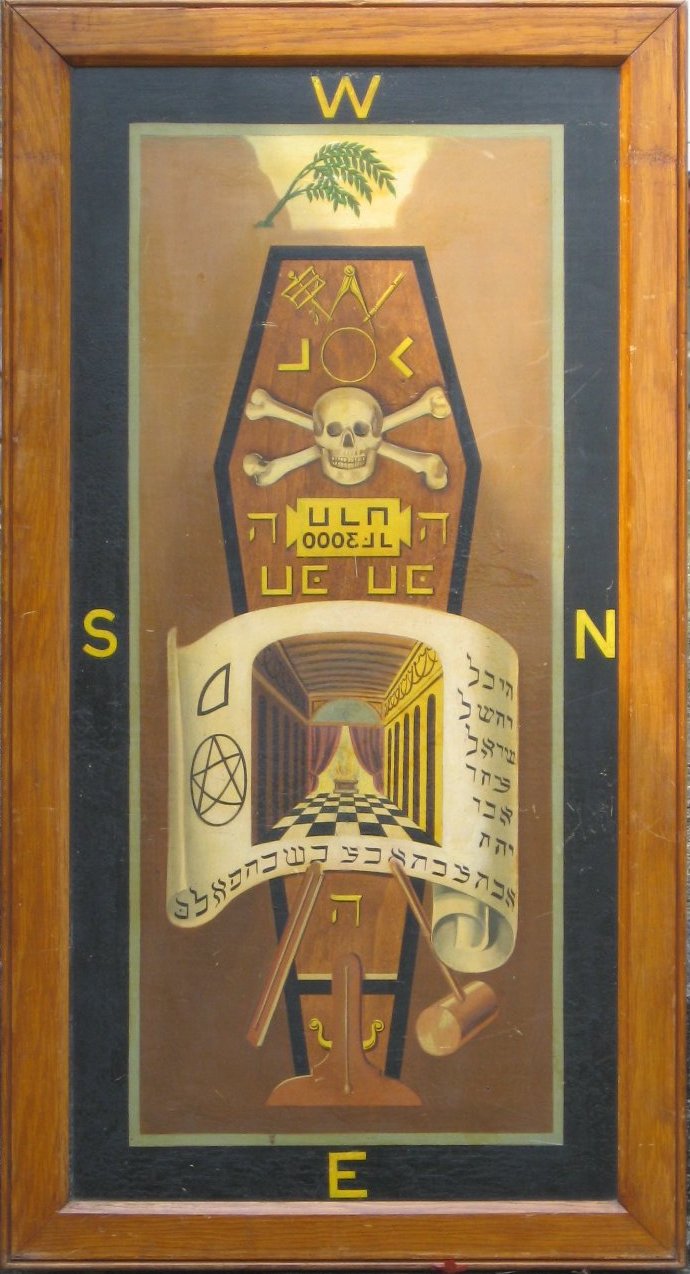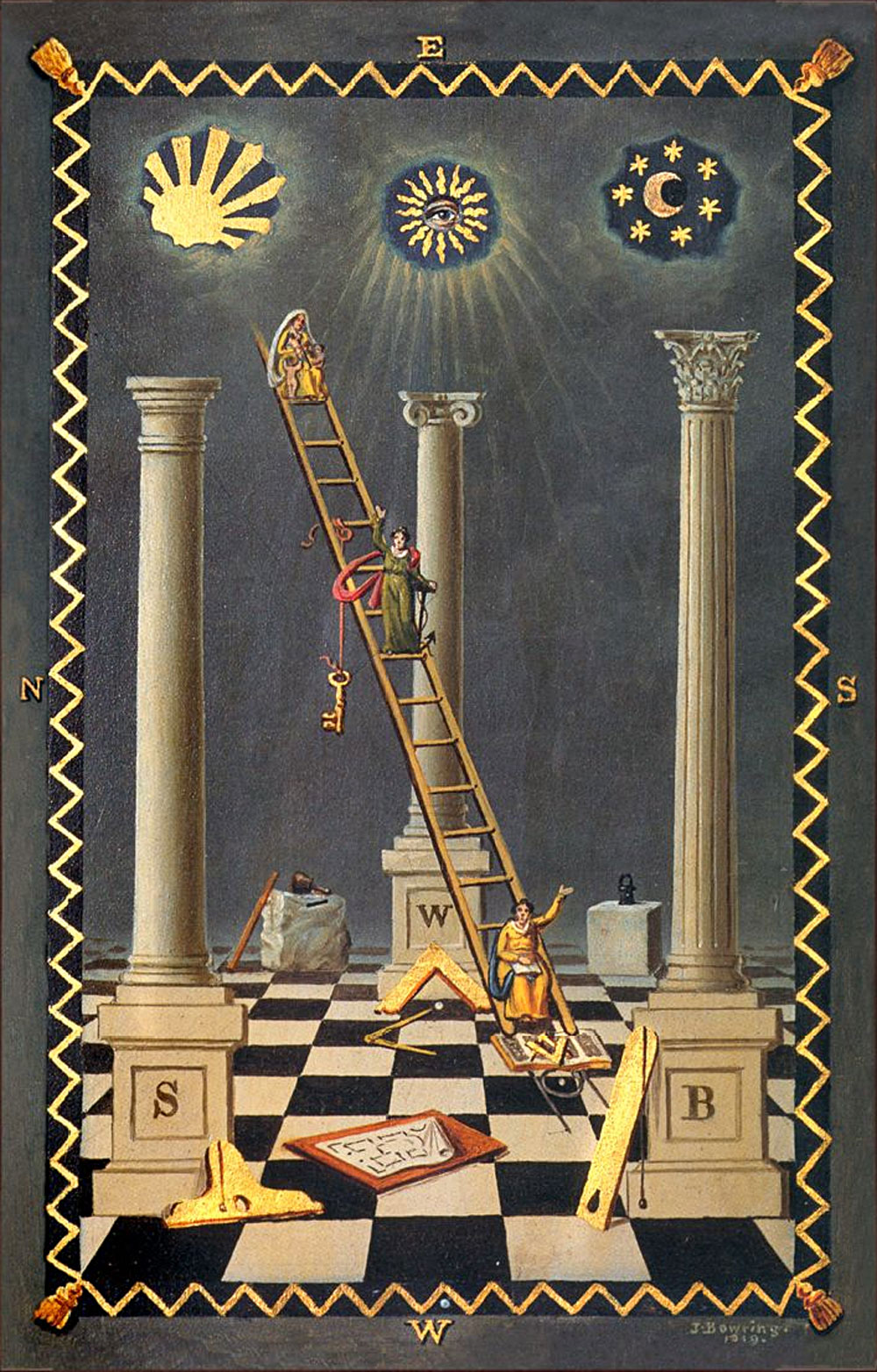An Animated Journey
My Dear Brethren
We had such an interesting and fun filled evening on the 22nd but we never quite got into the advertised Entered Apprentice Degree as three hours did not quite get us there. We covered a lot of history that did put the degrees of Freemasonry in context and got into a number of interesting side issues, especially about the critical role of the Lodge Banquet. By way of compensating for the missing EA Degree education we promised you two things. One is that we will hold a future Banquet Meeting on the subject and get right into it then. The second promise was that I would send out a weekly article/piece relevant to the EA degree (and maybe some other subjects)
I am calling my mailings the LOI of the Mystic Tye where:
LOI is LODGE of INFORMATION
The "L" is in the shape of a Masonic Square.
The "O" is the circle that has a point to it.
The "I" is a reference to that All Seeing Eye that is an important feature of the philosophy of Freemasonry.
The Mystic Tye (as used by the Masonic Poet Laureate of Scotland, Robbie Burns) has been that special bond that characterizes our Craft.
"The Cement of Brotherly Love and Affection, that Cement which unites us into one Sacred Band or the Society of Brothers, among whom no contention should ever exist, but that Noble Emulation of whom can best work or best agree...."
Missing from our Ontario (Emulation) Ritual is the Trowel as a working Tool that is used "to Spread that Cement"
(More later about the trowel, a tool that is a standard part of earlier ritual of Freemasonry and a standard part of US current rituals.)
Like so much in our ceremonies we Square the Lodge and get a Lecture on the Tracing Board and nobody explains what they are and what is their connection.
Lodge layouts and rituals are fairly standard in the Lodges that are derived from the English Emulation Ritual of 1813. These reworked rituals were adopted when the Grand lodge of the Ancients and the Grand Lodge of the Moderns were merged to form the United Grand Lodge of England (SUBJECT OF A FUTURE ARTICLE TO BE SENT) and most Commonwealth countries are in that group. The study of the original and later enhanced rituals of those Schismatic Grand Lodges certainly provides a lot of insight into the Emulation based rituals that we use today. Those old rituals can be found and a senior masonic educator should be able to direct you to them.
Like so many other aspects of our Craft practices (“ancient usages and established customs”) the “Squaring the Lodge” is rarely, if ever, explained as any part of Masonic Education. The typically uninformed Brother could easily jump to the conclusion that it has to do with the masonic working tool, the square with its operative and speculative explanations. The fact is that it has more to do with the form of the early speculative lodges which were set up somewhat differently than we see today. This is explained below.
Tracing boards are painted or printed illustrations depicting the various emblems and symbols of Freemasonry. They can be used as teaching aids during the lectures that follow each of the Masonic Degrees, when an experienced member explains the various concepts of Freemasonry to new members. They can also be used by our brethren as reminders of the concepts they learned as they went through the ceremonies of the different masonic degrees.
Floor and Table Designs
In the eighteenth century Masonic lodges met chiefly in private rooms above taverns, and the symbolic designs used in catechesis were chalked on the table or floor in the centre of the hired room, usually by the Tyler or the Worshipful Master.[Evidence suggests that a simple boundary was drawn (usually a square or rectangle, or sometimes a cross) within which various Masonic symbols were added, often of a geometric type (such as a circle or pentagram). In many lodges the boundary shape may have been drawn by the Tyler, with the Master adding the symbolic detail. Later various symbolic objects were incorporated, examples including a ladder, a beehive, and an hourglass, and sometimes drawings were interchangeable with physical objects.[ At the end of the work a new member was often required to erase the drawing with a mop and bucket, as a practical demonstration of his obligation of secrecy or by the tyler.
Though the various Grand Lodges were then generally hostile to the creation of any physical representations of the ritual and symbols of the Craft, the time-consuming business of redrawing the symbols at every meeting was gradually replaced by keeping a removable "floor cloth" on which the various symbols were painted and it was kept locked away. Different portions might be exposed according to the work being executed. By the second half of the eighteenth century the Masonic symbols were being painted on a variety of removable materials ranging from small marble slabs to canvas, to give a more decorative and elaborate symbolic display. Because “The Lodge” was on the floor in the form of a rectangle it was necessary to Square the Lodge when walking around in it as part of the Degree.
Painted Boards
During the nineteenth century there was a rapid expansion of the use of permanent painted tracing boards, usually painted on canvas and framed in wood. Many artists produced competing designs, and most lodges commissioned sets of bespoke boards which were therefore of a unique design, despite following common themes. Some designs became particularly popular, leading to some repetition of favoured design features. Boards by John Cole and Josiah Bowring were examples of popularly recurring designs.
The English artist John Harris was initiated in 1818 and he produced many different series of tracing boards, including a miniature set of 1823 which became popular after Harris dedicated the design to Prince Augustus Frederick, Duke of Sussex, the first Grand Master of the United Grand Lodge of England (UGLE).
[Eventually the Emulation Lodge of Improvement sought to bring a measure of standardization in tracing board design, and organized a competition in 1845, to which many different designs were submitted. Harris himself submitted at least two different sets to the competition, but one of his designs was the winner. Harris revised the designs in 1849, and these "Emulation" tracing boards are today considered a definitive design within British and Commonwealth Freemasonry.
In lodges under the UGLE, and many jurisdictions derived from English Freemasonry, (SUCH AS CANADA) tracing boards are an essential part of lodge furniture, sometimes displayed flat on the floor, and sometimes vertically against a pedestal or mostly on the wall.
Maizels Comment
It is perhaps unfortunate that in many of our Lodges the tracing boards of all three degrees are on permanent display on the walls, one behind the Junior Warden, one behind the Senior Warden and one on the North wall. By this practice brethren of an inferior rank can become familiar with them and their theme prior to receiving the related degree Lecture.
In the Uk sets of three boards, usually of older designs, may often be found in special cases for storage and display within lodge rooms.
As different Masonic jurisdictions established official, or standard, degree rituals the creation of new tracing boards by artists waned, and has since largely disappeared in favour of standard designs. Nonetheless, some masonic artists have experimented with very modern designs for the twenty-first century. This is prevalent in European Grand Lodge jurisdictions.
Additional Note
There are sometimes tracing boards in other degrees. The Royal Arch tracing board has fallen into disuse in most places, and examples are now rare. In the Mark Master Mason and Royal Ark Mariner degrees as administered from London, the tracing boards have experienced a great revival in popularity from the end of the twentieth century, and official rituals for the explanations of these tracing boards are again in regular use in English lodges.



